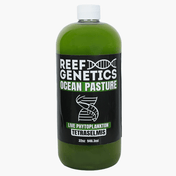Rock flower anemones, commonly referred to as "Rock Flowers" or "RFAs," are the perfect choice for aquarium beginners. These low-maintenance marvels are a joy to care for, displaying vibrant colors and unique polyp shapes that add a delightful touch to any reef ecosystem. Unlike some other anemone species, Rock Flowers are undemanding when it comes to lighting and water flow preferences, making them an excellent option for novice aquarists. Their stability and minimal movement distinguish them, setting them apart from their more mobile counterparts. Affordable, colorful, and adaptable to various tank sizes, these anemones are a fantastic addition, but here's a closer look at the key information to ensure your success.
Understanding Rock Flower Anemones
Before delving into the specifics of caring for Rock Flower Anemones, it's essential to familiarize yourself with these captivating creatures. Belonging to the Phymanthus species, these anemones are native to the tropical Caribbean waters and stand out due to their distinct disk-shaped appearance, particularly when fully expanded, with edges that do not curl inward. Their central mouth is encircled by up to 200 unique tentacles. While they are typically small, measuring between 1 to 2 inches in diameter, they can grow up to 4 inches wide. In the wild, some have been documented to reach up to 8 inches in diameter. What truly sets them apart is the variety of their tentacle shapes, ranging from smooth to slightly jagged.
Rock Flower Anemones are renowned for their spectacular colors and patterns, showcasing a remarkable palette of hues. From turquoise-blue centers surrounded by neon yellow-green with bright red-orange tentacles to vibrant neon pink and orange centers with celestial blue tentacles, these anemones are a visual treat. Prices can vary, ranging from $10 for monochromatic individuals to $200+ for designer colors and patterns. An attractive specimen typically falls around $60, and despite their small size, they inject a burst of color into any aquarium.
Placement and Care
Rock Flower Anemones thrive in varying water flow and lighting conditions, making them versatile additions to your tank. While they can tolerate different placements, they appreciate moderate water flow and a substrate like a sand bed or rockwork for stability. These anemones tend to stay in one spot once they've chosen their location, although there are exceptions. Consider using protective covers on powerheads and wave makers to prevent any rare wandering.
Reproduction for Rock Flowers differs from most other anemones, as they reproduce sexually. To encourage successful reproduction, it's recommended to house multiple individuals. Baby Rock Flower Anemones can often be found beneath the petals or tentacles of adults before migrating to the substrate and rockwork as they grow. These young anemones have similar dietary needs, which include both offered food and food drawn from the water during broadcast feedings.
Feeding Guidelines
Rock Flower Anemones are photosynthetic carnivores, accepting a wide range of foods during broadcast feedings or direct feeding, usually three times per week. Offer appropriately sized food, ensuring smaller options for the young anemones, such as frozen cyclopods or specially prepared coral food. For adults, consider meaty chunks of chopped seafood like shrimp, scallops, brine shrimp, or mixed seafood blends, making sure the pieces are small enough to fit into their mouths. Simultaneously feeding tank fish can prevent them from stealing the anemones' food. Broadcast feeding is another option, distributing food via the flow of a return pump or powerhead.
Compatibility and Tank Size
Rock Flower Anemones are well-suited for various tank sizes, from nano setups to larger reef tanks. Their compatibility extends to corals, fish, and certain invertebrates, forming symbiotic relationships with species like Sexy Shrimp, Anemone Shrimp, or Porcelain Crabs. However, exercise caution when housing them with clownfish, as compatibility may be limited. Additionally, be aware that some sand-sifting species like starfish may occasionally annoy Rock Flowers.
To maintain their preferred parameters, consider:
- Salinity: 1.025
- pH: 8.1-8.4
- Alkalinity: 8-12 dKH
- Magnesium: 1250-1350 ppm
- Calcium: 400-450 ppm
When introducing Rock Flower Anemones to your tank, focus on their compatibility with other tank inhabitants. Their low maintenance, striking colors, and easy care make them a fantastic choice for beginners, brightening up your aquarium effortlessly.


















